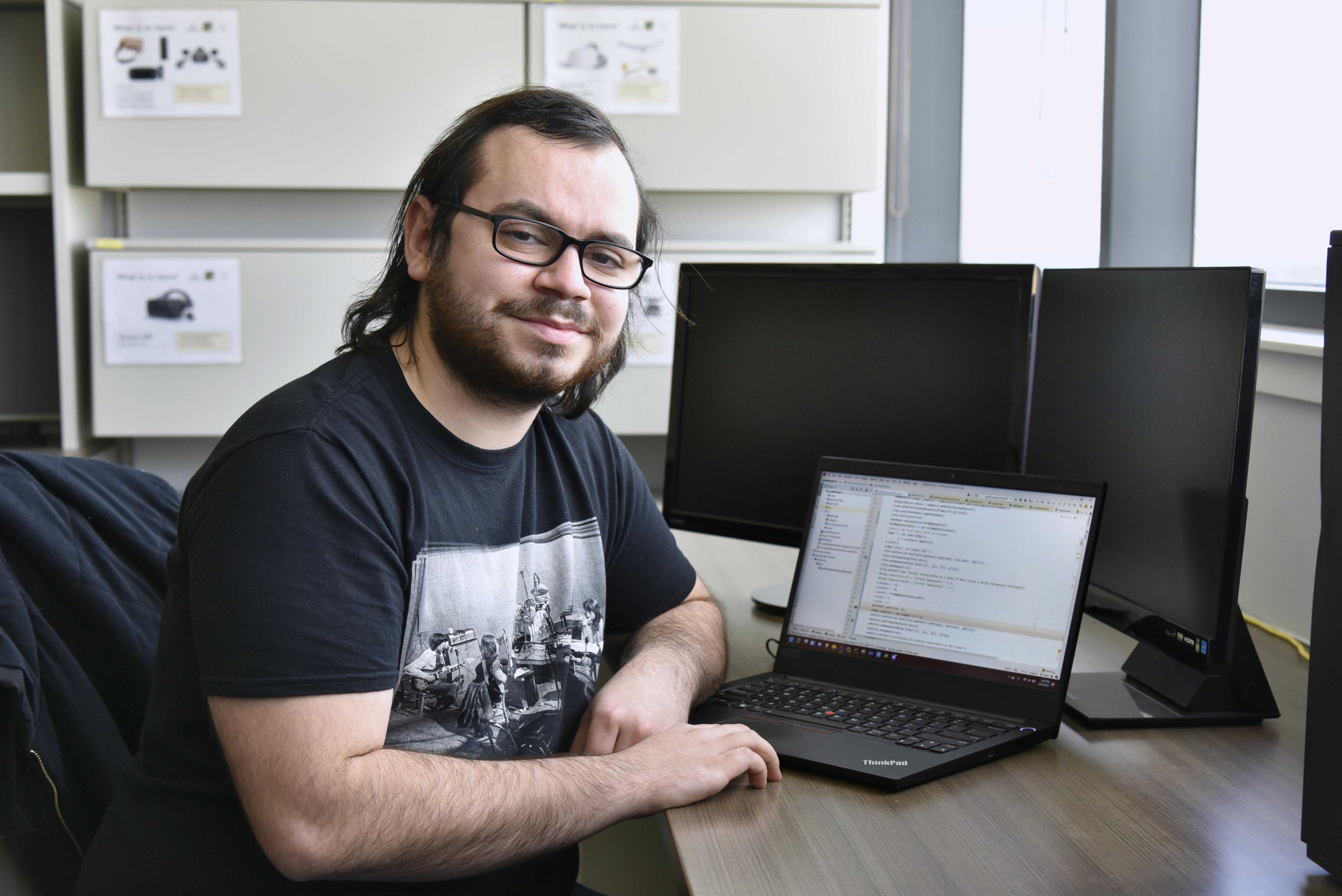Junior computer science major and logic minor Dominic Altamura received a Student Scholarly and Creative Activity Grant to research a computational process known as symbolic integration.
SUNY Oswego junior computer science major and logic minor Dominic Altamura recently received a Student Scholarly and Creative Activity Grant for research that he hopes will help demystify computer science concepts and applications for users of the general public.
Altamura’s project, “Concurrent Symbolic Integration,” first began with his use and interest in symbolic integration calculators which he used while taking Calculus 1.
“For those who haven't taken calculus, symbolic integration is just a procedure used to derive a formula that's used to calculate the area under a line on a graph. To check my answers when solving symbolic integration problems, I would often use a symbolic integration calculator found online,” Altamura said. “Over time, I had become interested in how these calculators worked, as I was used to computers being able to solve numerical problems, but being able to solve a problem based on mathematical linguistics was completely foreign to me.”
The more Altamura looked for information as to how these calculators worked, the more he realized that there were no accessible, concrete solutions or answers. After turning to multiple resources, Altamura decided to make his honors thesis project about “implementing a symbolic integration calculator and using the thesis itself as a supplement to the calculator that thoroughly explains the theory and algorithms that are involved in the development of such a project.”
Creative computing
While many people use computers or aspects of computer science in their daily lives, they might not truly understand the intricacies of it. And while many may feel as though computer science is a topic they would never be able to understand, Altamura hopes to show that at the root of fascination can come understanding.
“I think it's human nature to want to understand how things work. In my experience over the last several years, computer science has been an area of fascination for many people that they feel is unexplainable,” Altamura said. “When I say this I don't mean there are people that are actually incapable of understanding how computer science concepts work, but I find that a lot of people just have a feeling that they can't understand it because the theory and algorithms feel out of their realm of knowledge. I want to show people that computer science is not an unattainable area of knowledge for them and that it just requires research and practice like any other major.”
Altamura notes the advisement from his faculty members has been critical to his progress. Mathematics faculty members Ioana Coman served as Altamura’s faculty mentor, with Elizabeth Wilcox as his secondary advisor.
“I've obviously written papers throughout college, but this project is much larger than anything I've ever done because of how long –- roughly a year and a half –- it takes to prepare an honors thesis,” Altamura said. “Their guidance has been massively beneficial since this is really my first time undertaking such a project. Along with this, just having two people who believe in you is such a massive source of support for something like this.”
Other funded fall 2021 Student Scholarly and Creative Activity grants included:
- “The Costs and Benefits of the ‘Hyper Brain’: How Intelligence, Anxiety, Overthinking and Rumination Interact” by Quinn Ceilly, with faculty mentor Leigh Bacher, psychology;
- “Using Automated Recording Units to Study Northern Cardinal Vocal Behavior" by Brooke Goodman, with faculty mentor Daniel Baldassarre, biological sciences;
- “Estimating the Detection Rate of Strix Varia Over the Course of a Spring Snowmelt Event” by Jamie Perrin, with faculty mentor Nicholas Sard, biological sciences;
- "Boys Can Wear Pink, Too!” by Justin Fischnich with faculty mentor Ritu Radhakrishnan, curriculum and instruction
For more information on these and other funding opportunities to support scholarly and creative activities, visit the Internal Grants website for Office of Research and Sponsored Program.




